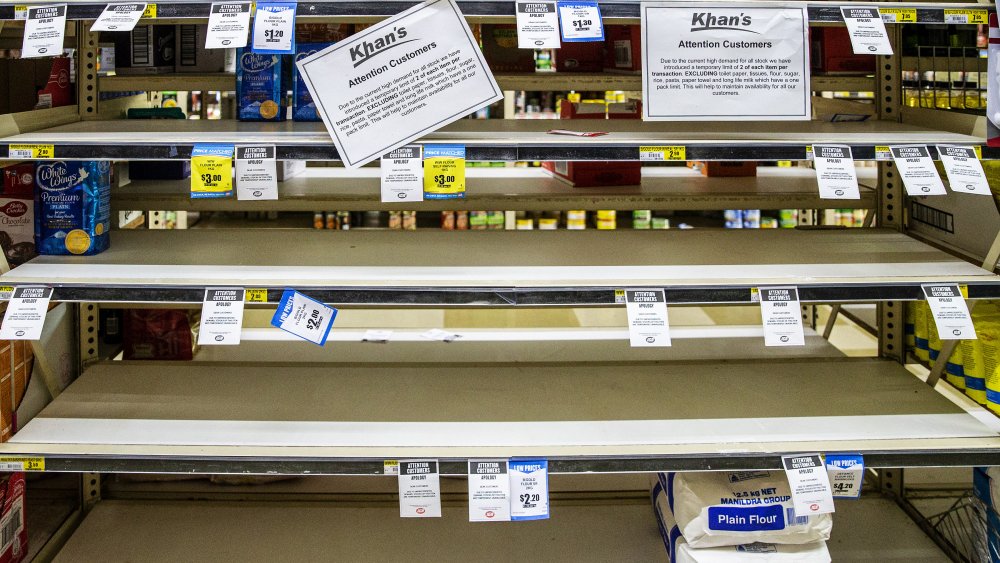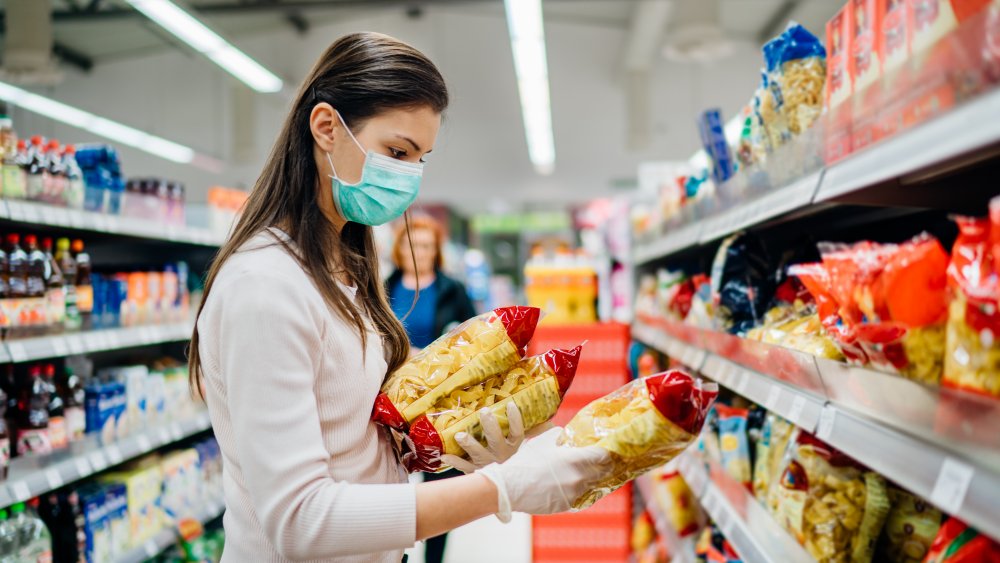The Real Reason People Panic-Buy, According To Science
On Oct. 28, Middlesex University released a press announcement detailing the findings of research conducted by Tom Dickins, a Professor of Behavioral Science, and PhD candidate Sabrina Schalz to explain why people panic buy. Looking at the animal kingdom, they noticed how animals faced with unpredictable foraging scenarios either bulked up in weight where possible or hoarded as much food as possible or both. In the release, Professor Dickins connected this behavior to the way consumers acted in March: "The increased shopping witnessed at the start of the pandemic in response to the uncertainty and risk posed by the possible shortage of food is a very similar behavior to that exhibited by animals when hoarding food in the face of danger."
A secondary explanation given at the time of the great toilet paper shortages is that uncertainty provoked humanity's pathological need for control. Both Time and Ars Technica examined the possibility that the shortages created by people panic buying for their quarantine will in turn create the conditions for more people to panic buy, lest they find they need a good during a shortage.
In this new study, however, a different lesson has been taken. Rather than "panicking" people were rationally stockpiling products with long shelf lives that could be missing in the future because no one knew when supply lines would improve. This could be why even though stores like Trader Joe's initially placed a maximum purchasing amount of two on each product type, society didn't panic spiral.
Are people panic-buying now?
Of course, March was only the first spike. However, as NPR reported on October 24, the U.S. has just achieved a new record in the number of coronavirus cases recorded in a single day. So, we should wonder what stores are doing to prepare for this new building wave which, as the Middlesex paper has shown, could prompt us into all planning ahead at the same time.
CNN checked in on how business practices evolved to meet these weird fluctuations in purchasing in September. Early on in the pandemic, grocery stores switched from planning weeks in advance to months, ensuring that stockpiles are accounted for. However, they also note that items like paper towels have suffered repeated shortages due to people consistently hoarding them.
Another reason given for the lack of paper towels is that they are made with a lean production method that doesn't account for sudden spikes. Lean manufacturing, as explained in a separate CNN article, is when companies only produce the amount they think a consumer will buy that day, which keeps inventory costs low. However, it also causes backlogs when people are building supply caches. Add to this the issue of larger supply chains needed to produce goods like paper towels and the industry tends to fall behind consistently when a disruptive event, like a global pandemic, hits.
Still, with this Middlesex University paper we might finally start to move beyond blaming consumers who are just trying to navigate a novel situation's complexities.

